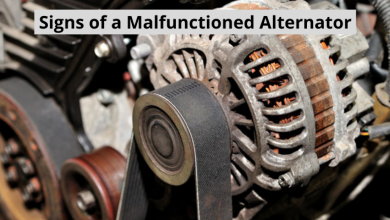AutomotiveHealth and Fitness
Food Inspection methods such as HACCP, risk analysis and GMP

.
Modern food inspection methods help provide safe products or foods to the consumer and are help to those who apply them.
Good Manufacturing Practices (GMP)
,which contain general principles of Food Hygiene, are legislate in the vast majority of countries, thus giving them a mandatory nature.
GMPs control
the operational conditions within an establishment tending to help the production of safe food. An adequate GMP program will include procedures related to: raw materials, hygienic-sanitary conditions of food processing establishments (including water supply), reception, storage and transport, maintenance of equipment, training and hygiene of personnel, cleaning and disinfection, pest control, product rejection.
Scheme
A large part of this scheme is the one contemplated in the Codex Alimentarius Code of Hygienic Practice (CAC-RCP-1 1969- Rev. 1997) and that many countries have incorporated into their legislation, and are consider,
systematic approach
This system is a systematic approach to identify hazards and estimate the risks that may affect the safety of a food, in order to establish measures to control them. It is systematic to ensure food safety from primary production to consumption. and let us be clear that it is a preventive system because it aims to prevent risks during processing in those stages identified as Critical Control Points and will allow those responsible for managing the food industry, such as the official authorities in charge of food control, have a technical and scientific tool to make decisions in aspects related to food safety.
Example
Let us point out that the system must be audit. It can be carry out by the initiative and responsibility of the company as well as by the competent health authority, controlling entities or buyers, it has the main objective of verifying if the written HACCP plan was prepare on a scientific basis and if it is being applied in practice. , as well as verifying if it reaches the proposed goals. It is base, essentially, on self-control by the food industry.
Finally, HACCP may be implement by the country according to its production and export needs, and in a general way or for a particular product. The respective legislation will be the one that will determine its obligation and will impose the respective sanctions in case of non-compliance.
Risk Analysis
Another essential aspect to highlight and dealt with by various Codex committees is Risk Analysis. Considered as a fundamental base process or methodology for the elaboration of standards related to food safety. It is consider a complex activity that encompasses risk assessment, risk management and risk communication. Risk management consists precisely in weighing the different regulatory options, in consultation with all interested parties and taking into account the risk assessment and other factors related to the protection of consumer health.
The risk analysis should preferably be carry out by regulatory authorities or by an entity larger than a private company. In short, it focuses on the control of a public health problem related to an industry in general.
Inspection varies country to country
Inspection varies substantially from country to country. In most countries, all inspectors are public health inspectors who have completed secondary school and attended a multi-year course on public health inspection with limited specific training on food inspection issues. In some, however, the basic training varies too much to be refer to in general terms; This can range from a bachelor’s degree in food science to a degree even less than elementary school. Most countries have trained veterinarians for meat inspection and internal control of meat processing plants. However, once the cattle are remove from the refrigerator, inspection falls to the field inspection staff.
Inspectors frequently
obtain samples from meat shipments or simply collect suspicious food samples from points of entry, food processing plants and / or local markets and send them to the relevant food control laboratories for examination and testing. analysis. In general, control operations apply mainly to imported food, while locally produced food receives little attention in this regard. In some countries, inspectors and / or inspection committees are authorize to take decisive action in cases where obvious signs of deterioration are find. However, in some countries,
Inspectors are not Proper Tool?
Inspectors are not provided with the proper and necessary tools to extract representative samples and perform a simple on-site examination for those cases that do not require examination in analytical laboratories. They are also not provided with a comprehensive and detailed manual to follow in their day-to-day work, although this could be invaluable, especially for inspectors with limited training.
In Laboratories
Sometimes laboratory personnel question whether or not the samples received represent the lot from which the sample was draw and, in many cases, laboratories must request a second sample before issuing the final report, a state of affairs that causes unnecessary extra work, wasted time and increased analysis costs. They are also not provided with a comprehensive and detailed manual to follow in their day-to-day work, although this could be invaluable, especially for inspectors with limited training.
laboratory personnel question
Sometimes laboratory personnel question whether or not the samples received represent the lot from which the sample was draw and, in many cases, laboratories must request a second sample before issuing the final report, a state of affairs that causes unnecessary extra work, wasted time and increased analysis costs. They are also not provided with a comprehensive and detailed manual to follow in their day-to-day work, although this could be invaluable, especially for inspectors with limited training. Sometimes laboratory personnel question whether or not the samples received represent the lot from which the sample was draw and, in many cases, laboratories must request a second sample before issuing the final report, a state of affairs that causes unnecessary extra work, wasted time and increased analysis costs.
proposed manual
The proposed manual can be divide into two parts: one dealing with
general food sampling and inspection issues; and the second, that it deals with
basic foods.
Such a manual ensures the uniform application of legal procedures, a correct administrative approach, and uniformity in the technique of sampling and inspection. However, such manuals should not be take as a substitute for training, since only trained and qualified inspectors can be expect to effectively use the required techniques and understand the processes involved. The assistance and / or guidance of specialized international and / or regional agencies are essential to prepare said manual.
Control Services
The food inspector typically occupies an important position in the food control service. Their tasks are not limited to the “police action” of discovering and confiscating lots of food and / or transmitting. the evidence when an infraction has taken place;.
important
more important is the preventive role it can play in achieving voluntary compliance with. regulations in the interest of consumer protection; legal action should be consider a last resort. Food inspectors should therefore be very familiar with the general principles of food science and technology, hygiene and sanitation, as well as being well versed in the requirements of food legislation and regulations.
Importance
The importance of well-trained inspection personnel should not be underestimate. Ideally, food inspectors should be academic graduates in food science and technology, with further training acquired on the job regarding national food laws and regulations.





